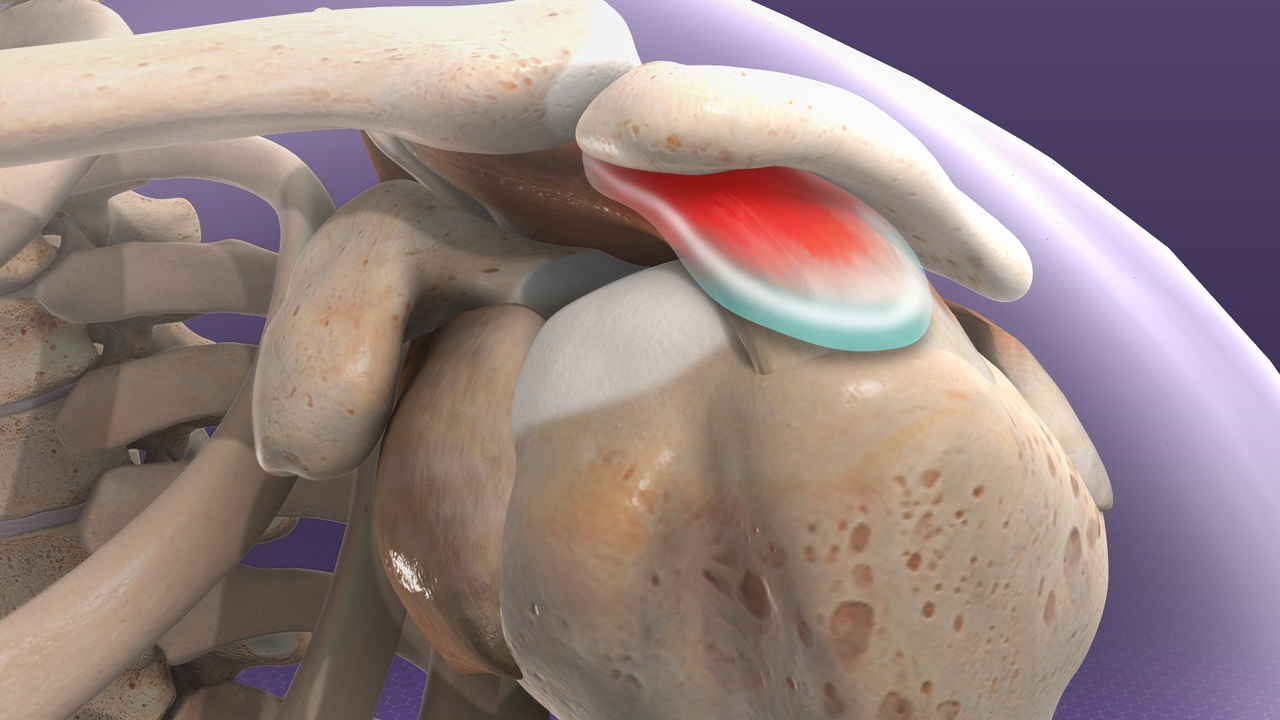
What is impingement syndrome? It's a common shoulder issue where muscles, tendons, and bursae get pinched in the subacromial space, causing pain and limited movement. This condition can affect anyone, from athletes to desk workers. Poor posture, repetitive overhead activities, and aging are some culprits. Symptoms often include a painful arc when lifting the arm, weakness, and night pain. Early diagnosis and treatment are crucial to prevent complications like rotator cuff tears. Physical therapy, lifestyle changes, and sometimes surgery can help manage this condition. Understanding impingement syndrome is key to maintaining shoulder health and avoiding chronic pain.
What is Impingement Syndrome?
Impingement syndrome is a common shoulder condition that can cause significant pain and limit your ability to move your arm. Understanding its causes, symptoms, and treatments can help manage this condition effectively.
-
Definition of Impingement Syndrome: Impingement syndrome occurs when the muscles, tendons, and bursae in the shoulder get squeezed or compressed, leading to inflammation and pain.
-
Causes of Subacromial Impingement Syndrome: Factors like the shape of the acromion, bone spurs, poor posture, shoulder instability, and muscle weakness can narrow the subacromial space, causing impingement.
-
Signs and Symptoms of Shoulder Impingement: Common symptoms include pain when lifting the arm, rotator cuff weakness, muscle tightness, and a forward-positioned humeral head.
-
Risk Factors for Subacromial Impingement Syndrome: Poor posture, impaired biomechanics, rotator cuff weakness, and being over 40 years old increase the risk of developing this condition.
Diagnosing Impingement Syndrome
Accurate diagnosis is crucial for effective treatment. Here are some key points about how impingement syndrome is diagnosed.
-
Diagnosis of Impingement Syndrome: Physical therapists diagnose this condition based on symptoms and special movement tests. MRI and X-ray imaging can help but aren't always necessary.
-
Prevalence of Shoulder Impingement Syndrome: This syndrome is the most common cause of shoulder pain, accounting for 44% to 65% of all shoulder pain complaints.
-
Pathogenesis of SAIS: The narrowing of the subacromial space due to structural abnormalities or bone spurs leads to the compression of soft tissues, causing pain and inflammation.
-
Clinical Presentation: Patients typically experience shoulder pain that develops gradually, often radiating to the lateral mid-humerus, and worsens with activities like combing hair or reaching overhead.
Complications and Differential Diagnosis
Understanding potential complications and other conditions that mimic impingement syndrome can aid in better management.
-
Differential Diagnosis: Conditions like rotator cuff tears, calcific tendinitis, and subacromial bursitis can present similarly and may require MRI for accurate differentiation.
-
Complications of Untreated Impingement: If left untreated, impingement syndrome can lead to chronic pain, tendinosis, osteoarthritis, bone spurs, or rotator cuff tears.
Treatment Options for Impingement Syndrome
Effective treatment can significantly improve symptoms and quality of life. Here are some common treatment strategies.
-
Treatment Options: Early identification and intervention are crucial. Physical therapy, manual therapy, joint mobilization, and strengthening exercises are key components of treatment.
-
Role of Physical Therapy: Physical therapy focuses on improving muscle flexibility, joint alignment, and shoulder mobility through hands-on techniques and exercises.
-
Surgical Decompression: Surgery may be considered if conservative treatments fail. The procedure involves removing structures causing impingement, but its effectiveness is still debated.
Lifestyle Factors and Prevention
Certain lifestyle factors can increase the risk of impingement syndrome. Understanding these can help in prevention.
-
Lifestyle Factors: Insomnia, short sleep duration, mobile phone usage, and heavy manual work are linked to an increased risk of impingement syndrome.
-
Sleep Habits: Poor sleep habits, including insomnia and short sleep duration, can contribute to the development of impingement syndrome.
-
Mobile Phone Usage: Prolonged mobile phone use can lead to poor posture and altered biomechanics, increasing the risk of impingement.
-
Heavy Manual Work: Repetitive overhead movements and heavy lifting can cause muscle imbalances and poor posture, leading to impingement.
-
Smoking Initiation: Smoking has a weak but causal association with an increased risk of impingement syndrome due to inflammation and tissue damage.
-
Alcohol and Coffee Consumption: These lifestyle factors do not significantly contribute to the development of impingement syndrome.
-
Physical Activity: Moderate physical activity helps prevent impingement by maintaining muscle strength and flexibility, while sedentary behavior does not increase risk.
-
Computer Usage: While not directly linked, prolonged computer use can lead to poor posture, contributing to impingement.
Patient Education and Interprofessional Care
Educating patients and involving an interprofessional team can enhance treatment outcomes.
-
Patient Education: Educating patients on the importance of physical therapy, home exercises, and activity modifications is crucial for effective management.
-
Interprofessional Team Approach: An interprofessional team, including primary clinicians, physical therapists, and orthopedic surgeons, ensures coordinated and effective treatment.
-
Role of NSAIDs and Corticosteroid Injections: These medications provide temporary relief from pain and inflammation, allowing for more effective physical therapy.
Rotator Cuff and Other Complications
The rotator cuff and other structures can be affected by impingement syndrome, leading to further complications.
-
Rotator Cuff Involvement: Chronic impingement can lead to rotator cuff tears or tendinosis, significantly impairing shoulder function.
-
Bicipital Tendonitis: The biceps tendon can become inflamed or torn due to chronic compression within the subacromial space.
-
Adhesive Capsulitis: Also known as frozen shoulder, this condition involves inflammation of the shoulder joint capsule, reducing mobility and causing pain.
Activity Modifications and Exercises
Modifying activities and performing specific exercises can help manage and prevent impingement syndrome.
-
Activity Modifications: Avoiding overhead activities and heavy lifting until the pain improves is essential for managing impingement syndrome.
-
Home Exercise Programs: These programs should include exercises that improve shoulder flexibility, strength, and mobility, such as shoulder rolls and wall slides.
-
Office-Based Exercises: Tailored exercises focusing on shoulder function and pain reduction, like manual therapy techniques and strengthening exercises, are important.
-
Neuromuscular Re-education: Teaching patients to stabilize the shoulder blade and separate shoulder movement from arm movement helps preserve the subacromial space.
-
Manual Therapy Techniques: Soft tissue and joint mobilization improve muscle flexibility, texture, and shoulder joint alignment and mobility.
-
Strengthening Exercises: Exercises like resistance band workouts and weightlifting focus on improving the strength of the rotator cuff and postural muscles.
Communication and Prevention
Effective communication among healthcare professionals and preventive measures can enhance treatment outcomes and reduce the risk of impingement syndrome.
-
Interprofessional Communication: Regular communication between physical therapists, primary care clinicians, and orthopedic surgeons ensures coordinated treatment plans.
-
Patient Education on Posture: Teaching patients about proper posture helps prevent impingement syndrome by minimizing compression of soft tissues within the subacromial space.
-
Lifestyle Modifications: Maintaining proper posture, avoiding heavy manual work, and improving sleep habits can help prevent impingement syndrome.
-
Role of Imaging: MRI and X-ray may confirm the diagnosis but should be used judiciously based on clinical presentation and physical examination findings.
-
Surgical Indications: Surgery may be considered if conservative treatments fail, based on a thorough evaluation of symptoms and response to non-surgical treatments.
-
Rehabilitation Goals: The primary goal is to restore normal shoulder function and reduce pain through a comprehensive program including manual therapy, strengthening exercises, and neuromuscular re-education.
-
Preventative Measures: Maintaining proper posture, improving sleep habits, and avoiding heavy manual work can help reduce the risk of developing impingement syndrome.
Key Points on Impingement Syndrome
Impingement syndrome is a common shoulder issue that can cause significant pain and limit daily activities. It happens when the soft tissues in the shoulder get pinched, leading to inflammation and discomfort. Factors like poor posture, repetitive overhead movements, and muscle imbalances can increase the risk. Early diagnosis and treatment are crucial to prevent complications like rotator cuff tears or frozen shoulder. Physical therapy, including manual therapy and strengthening exercises, plays a vital role in recovery. Sometimes, lifestyle changes such as improving sleep habits and avoiding heavy lifting can help. In severe cases, surgery might be necessary. Understanding the causes, symptoms, and treatment options can help manage and prevent impingement syndrome, ensuring better shoulder health and quality of life.
Was this page helpful?
Our commitment to delivering trustworthy and engaging content is at the heart of what we do. Each fact on our site is contributed by real users like you, bringing a wealth of diverse insights and information. To ensure the highest standards of accuracy and reliability, our dedicated editors meticulously review each submission. This process guarantees that the facts we share are not only fascinating but also credible. Trust in our commitment to quality and authenticity as you explore and learn with us.


